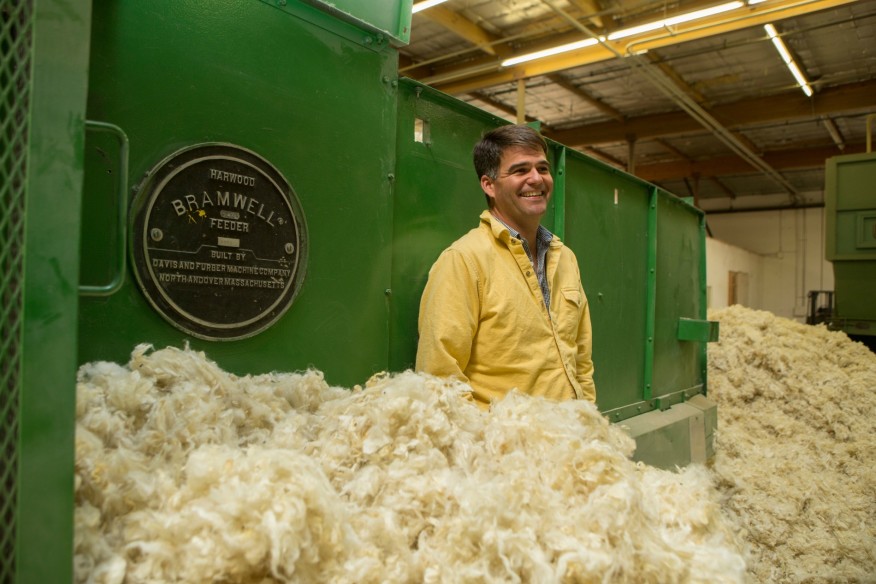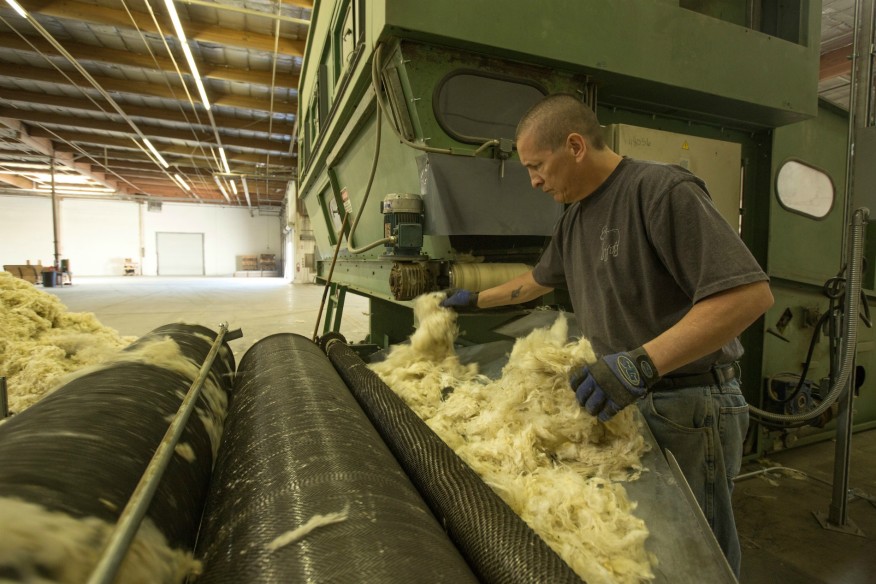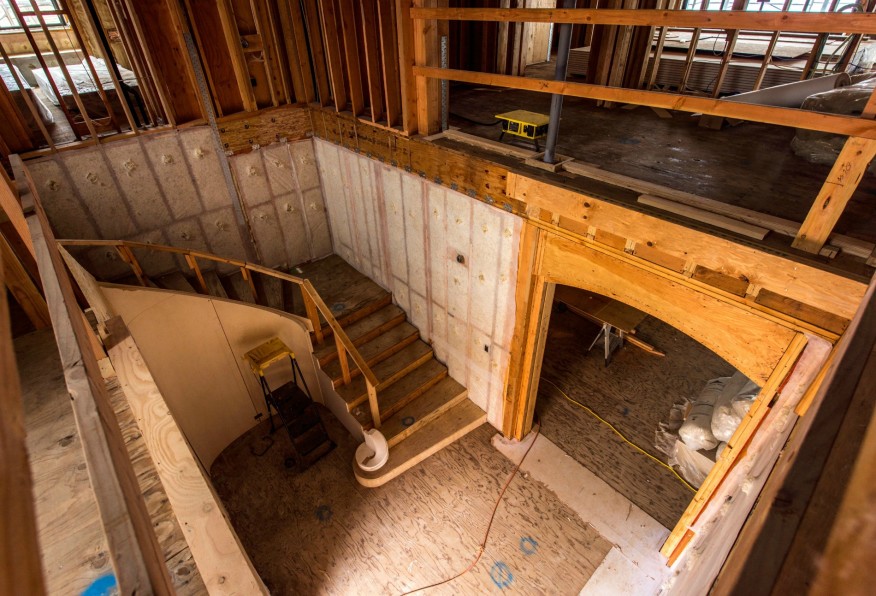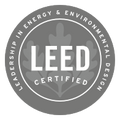
HAVELOCK WOOL IS PIONEERING THE USE OF UNALTERED SHEEP’S WOOL AS AN ENVIRONMENTALLY-FRIENDLY AND RENEWABLE INSULATION MATERIAL FOR U.S. HOMES AND BUILDINGS
Wool has been keeping both sheep and humans warm for centuries. But now one company is using shorn sheep’s wool to give fiberglass and foam insulation a run for their money.
Havelock Wool uses 100% natural wool sourced from New Zealand sheep to insulate homes and other buildings. Sheep grow wool in excess, so the renewable material is readily available and has a number of inherent, eco-friendly properties that make it a viable contender for building insulation.
“It’s not even biomimicry, it’s more biophilia,” says Andrew Legge, the company’s founder. “It’s using a product that nature has given us in our daily lives.”
With the introduction of technologies that could create synthetic fibers for less than the cost of natural wool, farmers began to look for alternative uses for the traditional clothing material, which seemed to be becoming nothing more than a byproduct of the meat industry. Legge launched the company three years ago after spending a considerable amount of time traveling through New Zealand, where he encountered builders who were using the renewable, sustainable, and recyclable material as a noise and thermal insulation product on a small scale.

Photos courtesy of havelock wool Andrew Legge, founder of havelock wool.
The 100% wool product can absorb moisture up to 35% of its net weight against 65% of relative humidity, which Legge cites as one of the standout properties of the material.
“Condensation and moisture is a major problem in how we’re building these days,” he says, referring to increasingly enclosed and airtight building envelopes in high-performance homes, which can trap condensation and moisture vapor in wall systems without proper ventilation. “There is an argument for putting foam in those spaces, but if you put a insulation medium that’s not permeable in a space where the moisture is not avoidable, it finds its way into the structure.”
In addition, the amino acids in the wool naturally bond with and trap the harmful chemicals formaldehyde, nitrogen oxide, and sulfur dioxide for cleaner air in homes. It is also flame resistant and self-extinguishing. Havelock does not introduce any synthetic mixes, glues, or bonding agents to the product, but does add a small amount of non-toxic boric acid (less than 1%) to make the wool insect repellent and further reduce flammability.

Photos courtesy of Havelock Wool
“You’ve got a product that is going to work with the challenges that are inherent to the environment because it’s something that has evolved in nature over thousands of years,” says Legge.
The company produces two insulation products—a batt insulation, typically cut at 48 inches, and a loose fill insulation that can be blown into a wall. The two formats produce high R-values ranging from 13-19 for the batt depending on size, and 11-50 for the loose product based on thickness and square-foot coverage. Unlike manufactured insulation, the company says that wool can maintain its R-value for 50 years.
Compared to fiberglass or cellulose insulation which tend to be some of the cheapest in the industry, Legge says Havelock’s product is about two to three times more expensive. However, he says it costs less than closed-cell foam, which can be the costliest option on the market. And unlike other insulation products, the installation process does not require any protective clothing or added safety measures.
Over the summer, the Havelock Wool team partnered with Costa Mesa, Calif.-based builder Corbin Reeves Construction to insulate a 17,000-square-foot residence in the Corona del Mar neighborhood of Newport Beach, Calif.
The homeowners wanted a material that could handle moisture, especially considering that the home sits right on the ocean.

“There was a real concern about moisture and mold,” says Legge. “Part of wool’s structure is a keratin which will not support the growth of mold.”
Photos courtesy of Havelock WoolHavelock’s wool products provided a moisture-management solution for this expansive ocean-front home.
The 17,000-square-foot home is the company’s largest residential project to date, but Legge says the firm has client’s ranging from single-family custom homes builders to people building one-off tiny houses. He hopes to bring more awareness to the product so that health-conscious homeowners and builders alike will know the natural and renewable material is an option.
“We are terrified about the amount of waste we generate, the finite resources we continue to use, the overstuffed landfills and oceans polluted beyond repair,” he says. “Wool as a building material, though a small piece, is a direct solution to each one of these increasingly serious problems. Unless sheep decide to stop producing wool, we’ll always have a renewable and sustainable product.”





